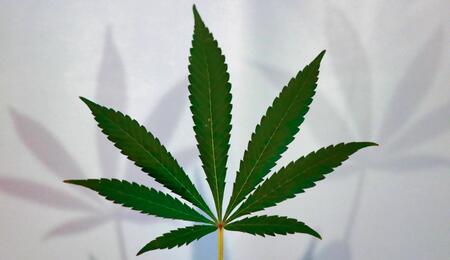Camels & Soft Black Hash

Everyone wants to go somewhere warm for their vacation. You want sights to see and people to meet. You also might want some really good smoke, and a lot of it. If this is your desire, then Egypt is the place for your next vacation. Surrounded by some serious marijuana and hashish producing countries, chances are you’ll find the smoke of your dreams in the Egyptian Bizarre.
Everyone wants to go somewhere warm for their vacation. You want sights to see and people to meet. You also might want some really good smoke, and a lot of it. If this is your desire, then Egypt is the place for your next vacation. Surrounded by some serious marijuana and hashish producing countries, chances are you’ll find the smoke of your dreams in the Egyptian Bizarre.
Generally the police don’t mind hash possession, as culturally it’s a somewhat more acceptable occurrence there. The desert Arabs actually give their camels chunks of hashish to chew on to keep them calm during sandstorms.
So now let’s get to some practicalities. The Egyptian pound is the currency of Egypt. One American Dollar is worth just under 7 Egyptian Pounds. It is divided into 100 piastre, or irsh, or 1,000 milliemes. The abbreviation is LE or L.E., which stands for livre égyptienne.
Better quality hash like Moroccan or Lebanese will cost you 120-150 an irsh. If weed is your thing, don’t expect big sticky buds like we have here. The grass there is still not as potent as the hydroponically grown stuff we get here in North America. It’s grown in great wild fields, so each plant doesn’t get the attention that we in North America are used to.
Some of the hashish even has its own Brand Names: Moroccan Hash (including Red or Blonde) and Honey Hash are a few you might run into. A couple more brand names are Sudanese Bongo and Lebanese Red or Blonde.
I personally recommend the Moroccan Black Hash, as it is black and clay-like and smells wonderful. Aim for dark brown and soft most of the time. Look for any imperfections in the middle of the piece after you break it. Look for color splotches and any foreign matter. If anything seems foreign or distasteful, politely say no thank you and move on.
Many tour operators will cater to your needs and this includes finding you some good smoke for the trip. Most guided tours offer 1 to 15 day adventures in Egypt, starting with the Pyramids and Sphinx on the Giza Plateau. Other sites to see via boat on the Nile or train alongside it are Aswan or Luxor and Dahab. A full 15 night Egyptian adventure will cost you about 450 Egyptian Pounds, or around $65.00 US. You may have to pay extra for meals at some stops along the way.
You’ll visit tombs and structures that were ancient in the time of Jesus. One tour offers a 15 day trip down the Nile to various historic sites. Then you come back to Cairo and are shown the off limits crypts and tombs every Egyptian aficionado must see at least once in their lives. Just imagine sparking up a bowl while standing in a 4,500 year old ruin. About how many before you have done that? The possibilities seem endless in this ancient land.
You can find the Egyptian Hookah pretty much everywhere you go. The practice is to smoke flavored tobaccos and occasionally introduce some hashish. But if you’re on the go most of the time, a small brass personal pipe is called for. You’ll find some high craftsmanship when it comes to genuine brass pipes in Egypt. Going the personal pipe route is fine if you’re moving around a lot. But if you’re staying in one hotel every night I advise you to invest in a hookah, some flavored tobacco and a big chunk of hashish. Enjoy the view from your balcony while getting righteously stoned on some of the best smoke our world has to offer.
While wandering around Giza and staring at the pyramids, you may take part in what the locals are offering. This includes everything from food to trinkets to camel rides. I definitely recommend a camel ride as part of your stay in Egypt. It seems a little daunting, but they’ve been beasts of burden since before the Pharaohs were around, so the techniques have pretty much been perfected. Once you mount the camel, be ready for a forward lurch that steadies out when the front legs are up. You’ll be surprised at how high you’re sitting and how smooth the ride actually is.
Throughout Egypt, days are commonly warm or hot, and nights are cool. Egypt has only two seasons: a mild winter from November to April and a hot summer from May to October. The only differences between the seasons are variations in daytime temperatures and changes in prevailing winds. In the coastal regions, temperatures range between an average minimum of 14 C in winter and an average maximum of 30 C in summer.
Egypt receives fewer than eighty millimeters of precipitation annually in most areas. Most rain falls along the coast, but even the wettest area around Alexandria receives only about 200 millimeters of precipitation per year. Alexandria has relatively high humidity, but sea breezes help keep the moisture down to a comfortable level. Moving southward, the amount of precipitation decreases suddenly. Cairo receives a little more than one centimeter of precipitation each year.
For those of you who aren’t inclined towards the out of doors, Cairo boasts some great sights. Whether it be a museum or one of the many modern inner city shopping districts, there’s sure to be something for you in Egypt’s capital city.
One more parting shot – you’ll be sorely tempted to bring your unsmoked hash with you on your way home. While you may get away with it, no one wants to spend time in an Egyptian jail if you don’t, so don’t tempt fate and leave it in your hotel room or give it to the taxi driver on your way to the airport.



